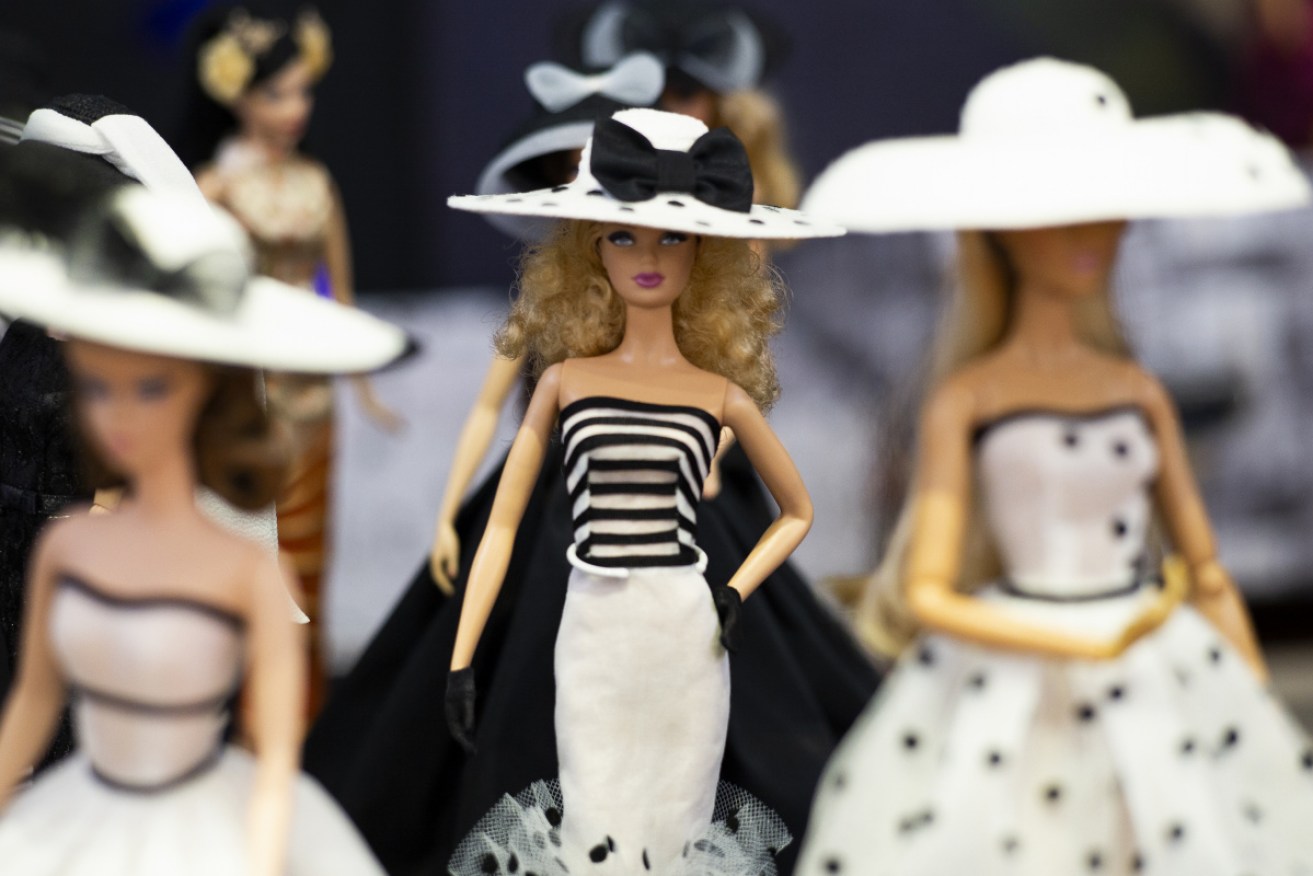On This Day: The Barbie doll hit toy shelves for the first time


Barbie dolls on show at the 2019 Official Barbie Collectors Convention in Spain. Photo: Getty
On this day in 1959, the Barbie doll went on sale for the first time and transformed the global toy industry.
Created by American businesswoman Ruth Handler, the long-legged fashion doll stood out because it looked completely different from other children’s dolls at the time.

Ruth Handler holding a Barbie that was created for the doll’s 40th anniversary in New York, 1999. Photo: Getty
During the 1950s, most children’s toys were made to look like babies and many Americans had never seen a doll with an adult body before.
The idea of creating an adult-bodied doll struck Ms Handler as she watched her daughter Barbara – after which Barbie was named – give her dolls adult roles as she played with them.
She suggested the idea to her husband, co-owner of Mattel toy company, but he didn’t like it, nor did Mattel’s directors.
Still, Ms Handler didn’t let it go.
During a trip to Europe in 1956, Ms Handler stumbled across a German toy doll called Bild Lilli who looked just like what she had in mind.
Bild Lilli was depicted as a blonde bombshell and successful career woman who got what she wanted without asking men for permission.
After returning to the United States, Ms Handler redesigned the doll and gave it a new name.

The first Barbie doll created in 1959. Photo: Getty
Donning a zebra-patterned ’50s swimsuit, the doll made its debut at the American International Toy Fair in New York.
Since then, Mattel has sold more than a billion Barbie dolls, easily making it the company’s largest and most profitable line.
But despite Barbie’s success, she has also copped heavy criticism.
Some people have slammed the doll’s impossibly long legs, thin waist and big breasts for promoting an unhealthy body image for young girls.
Although Barbie is sold as a range of different characters, such as Doctor Barbie, Astronaut Barbie and Sports Coach Barbie, her sexualised body – usually wearing tight pants or mini-skirts – has been blamed for making girls think more about their appearance than their career aspirations.

This year, the Barbie doll has been made to resemble Ukrainian fencer Olga Kharlan as part of Mattel’s Dream Gap Project aimed at helping girls achieve their dreams. Photo: Getty
On the other hand, the career-focused collectible has also been celebrated for encouraging women’s financial independence.
Whatever side of the fence you sit on, for better or worse Barbie has become a cultural icon.








